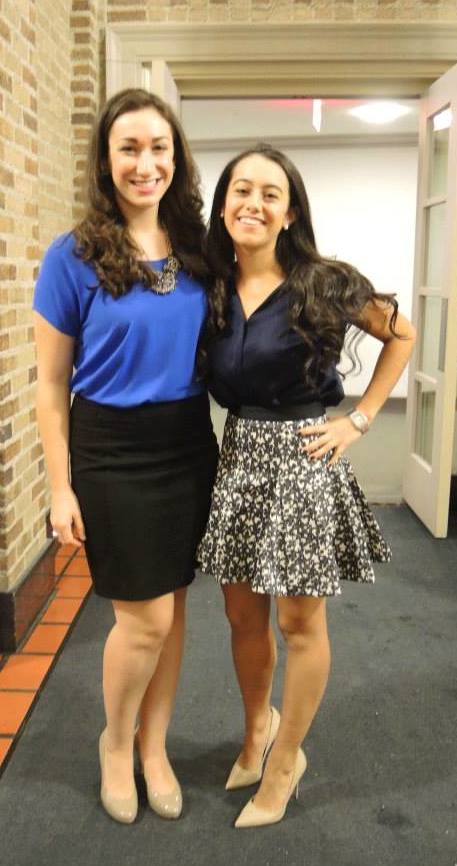Lauren Pally hates that she always has to wear a grey suit to her business classes at the Cox school. She would rather wear her extensive wardrobe of the bright colors she always gravitates towards.
“I spend so much money on bright and beautiful clothing yet I never have an opportunity to wear any of them,” said Pally.
Claire Dickey, a personal shopper at the downtown Dallas Neiman Marcus store, understands Pally’s pain. There are plenty of bleak racks of grey suits and white oxford shirts even at Neiman Marcus. It seems like no one has the audacity to put a creative spin on his or her office attire anymore. Leading up to the 60’s, women and men alike used to take pride in their everyday work apparel, a concept that now seems lost. Instead we replace colorful dresses and scarves with drab colors and unflattering silhouettes.
“When women come in they tend to try on the same style, an A-line suit, everyone wants to blend in and not take a fashion risk, but that’s not the only option,” said Dickey
Hundreds of students graduate each year from SMU. Finding a job is hard enough, so nailing the interview is crucial. Style experts and personal shoppers say it is better to dress to impress and separate yourself from the pile. Debunk the theory of wearing all black to an interview. It is okay to start incorporating more personal style.
For instance, Caroline Hicks an SMU journalism major keeps her signature style while remaining professional. She pairs bright tops and separates with black pencil skirts and fitted blazers.
“When I’m dressing for a professional event or interview I wear something more structured like a blazer, but will add a pop of color or pattern so that my personal style still shines through,” Says Hicks.
Jean Reiner, a recent Harvard graduate now working in Dallas may not be a fashion plate, but she can score an interview at any prestigious bank. A closet full of black and navy pantsuits have seemed to work just fine in her line of employment. She has never been one for fashion, but believes her conservative style is a crucial part of her work at JP Morgan.
“My loose grey suit may not have gotten me my job at JP Morgan. But I can guarantee if I had walked into the interview wearing an inappropriate dress it could have lost me the job.” Reiner said.
Maybe Reiner has a point. Dressing appropriately and stylishly separates you from the pack when entering an interview. Consciously dressing for an interview is a fine line. But if you follow a few steadfast dressing rules you can simplify your outfit options.
“Going to the first round of an interview is not the time to express your creative flair, however it wouldn’t hurt to have some fun accessories to lighten up your outfit,” said Reiner.
When it comes to an interview it is always better to be safe then sorry. This is not the time to express your fashion individuality. It is also important to keep in mind the attire of the position you are interviewing for. An interview with a design firm would place less emphasis on dress code then a high paying bank.
It seems there is a conflict between remaining professional and having a stylish flair in your work wardrobe. However, if done right you can remain professional, while keeping your personal style athletics. For a job interview it is key to dress appropriately for the job for which you are applying. Keep in mind a design or advertising based career will have much different standards then a large bank.
As Reiner said incorporating fun and bold accessories such as a chunky necklace or earrings is a good way to spice up a suit for a more corporate interview. However if you are entering a more creative firm the dress code can be more lenient. A floral skirt and blouse is a bright option for the spring.
Alexandra Thornton works at SQ 1 agency as a graphic design consultant in Dallas. She loves to roll into work in her harem pants and big hoop earrings.
“At SQ 1 they expect us to dress apart from the pack, this is a design firm, we were hired based on our individuality,” said Thornton.









